Illegal Hunts
Legal vs. Illegal Hunts
Legal hunts (Taiji, Faroe Islands, etc.) are generally very visible, and the tools to fight them – public pressure, legal challenges, social media campaigns, and so forth – are fairly well defined. The world watches as they happen, and every act of barbarism is documented and reported. Though many people aren’t aware of such events, fairly complete information is available to anyone who cares to look for it. Deciding where to begin with your activism, and which tools you’re going to apply to a given situation, is much easier.
Unfortunately, these things are rarely true when the discussion turns to illegal hunts. And to make matters worse, these less-visible, hence less-reported hunts are on a massive scale. Over 50 species of dolphins and small whales are hunted in nearly as many countries all over the world. (The main offenders are listed below.) At a minimum, 100,000 are killed every year. Alarmingly, the killing rate is increasing (which is not the case with most legal hunts).
A key problem with the illegal hunting of dolphins and small whales is that enforcement mechanisms are lacking in remote areas, which enables flourishing black markets to gain a foothold. Despite legislation, in many cases thousands are killed, and the meat is sold illegally in local markets. How we get the needed skills and resources into the hands of local law enforcement is a problem we’re nowhere near solving at this point. Clearly this will require a cooperative effort which crosses borders. In many of the countries concerned, dedicated men and women are there on the ground, doing the research, advocacy work and law enforcement. These people deserve all the support they can get from the international community.
For obvious reasons, these hunts don’t get the same amount of media attention as legally sanctioned hunts, and are more easily able to slip under the radar. What we do know is that they are horrific. As a rule, those who are killed will suffer a prolonged and painful death, as the killing methods used tend to be very rudimentary. They are mostly intended to be cost effective, and there is little consideration given to the terrible amount of suffering inflicted.
When we discover what the hunters are often using the bodies for – as pet food, or to bait fish hooks in the shark, tuna and other fisheries – the horror is further compounded. Many are still used as food for human consumption, though it now appears that this use has declined in many places – probably because of the high levels of mercury and other contaminants in the flesh. However, its use as bait in fisheries has seen a dramatic rise. The reason for this is that the meat from dolphins and small whales is very durable in the water, allowing it to remain attached to hooks for a long time. The willingness to use the flesh of such a thinking, feeling being for such a banal purpose is beyond shocking.
What appears to be driving this trend is our rapid depletion of the oceans. With dwindling fish stocks in many places, the failing viability of fisheries has led to an increasing number of desperate measures taken to keep catch levels up, while incurring lower costs. For example, there have been increasing reports of people from vulnerable groups, such as refugees and economic migrants, being conscripted into slavery, to work on fishing boats for little more than subsistence. We believe that this new outrage against dolphins is a case of them becoming the latest victims of what is an emerging and ugly phenomenon.
This highlights the urgency of the need confronting us. With these hunts being unregulated and unmonitored, they are usually unsustainable and with unknown impacts on marine life. They threaten to drive many species to extinction. Further, because the hunts are illegal, conservationists fear that the number of dolphins and small whales killed is probably grossly underestimated.
Unless we find solutions to this problem, and quickly, it’s likely that entire populations will be extirpated, and even entire species wiped out.
Worst Offenders
The largest slaughter of dolphins and small whales takes place in Peru, where up to 15,000 are killed annually, mostly to be used as bait in shark fisheries.
Other countries where illegal hunting takes several thousand at a minimum are: Nigeria (approximately 10,000), Brazil, Venezuela, Madagascar, India, South Korea, Malaysia and Greenland *. The reasons differ from country to country, with use as bait and human consumption being the main ones. Others include traditional medicines, material for amulets or currency, and the elimination of species perceived to be competitors for declining resources.
*We would like to note that the hunts in Greenland, along with their counterparts in Northern Canada, the US (Alaska) and Russia are technically legal. These are largely subsistence hunts by indigenous peoples within the Arctic, and most of us don’t realize that the number of individuals killed has expanded in recent decades. This is due in part to steadily improving technology, as well as changing conditions related to climate change, which makes possible easier access. Quotas meant to limit catches are frequently exceeded because it’s often the case that the whale is critically injured with a weapon but is not successfully landed.

